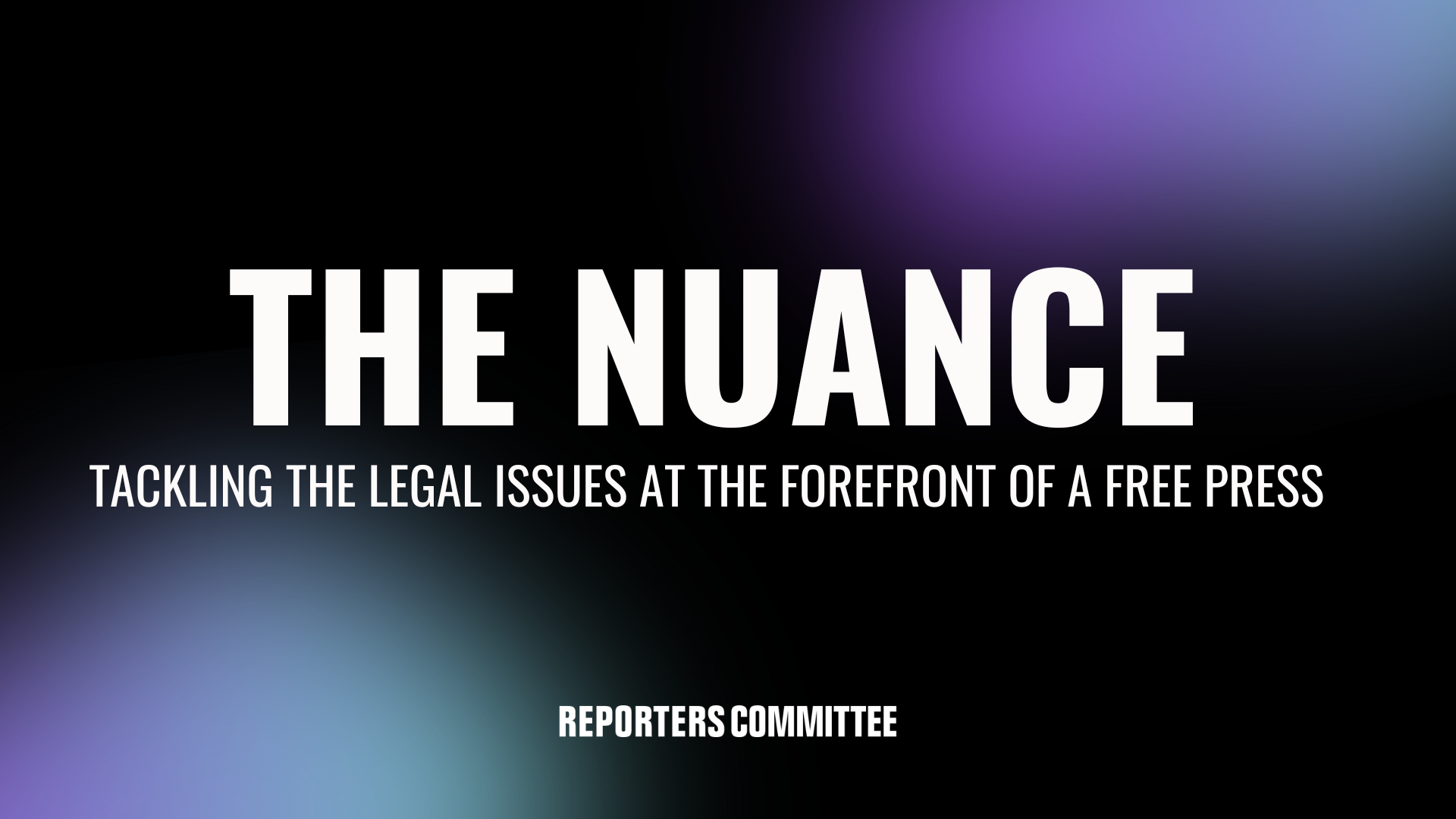How a politically motivated tax charge led to New York Times v. Sullivan

We wrote last week about how the populist case against New York Times v. Sullivan gets things backward — that constitutional limits on state defamation laws are, in fact, about protecting the “little guy.” And, led by our intrepid legal fellow Emily Hockett, we later published a deep dive into the substance of the Florida proposals to expand libel law in that state.
With apologies to our readers already familiar with this history, we thought it might be next helpful to offer the human story behind Sullivan and why, precisely, the predations of segregationist public officials against the Rev. Dr. Martin Luther King Jr. during the civil rights movement ultimately led to Sullivan and its protections for news reporting. More than anything, the story illustrates how central Sullivan’s “actual malice” rule is to the preservation and promotion of self-government and personal liberty (rather than an unwarranted gift to the “legacy media”).
To understand the case that led to Sullivan, it’s key to recall the general history of last century’s civil rights movement. In 1955, the arrest of Black high school student Claudette Colvin for refusing to give up her seat to a white man led to discussion of a bus boycott in Montgomery, Alabama. The boycott was ultimately launched nine months later, after Rosa Parks’s arrest for refusing a bus driver’s order to move back a row when a white man boarded. King, then a pastor in Montgomery, led the boycott, which elevated him to the national stage.
Five years later, in early 1960, the sit-in movement began with King’s support, and, on March 19, 1960, The New York Times ran an editorial supporting the protests that urged Congress to “heed their rising voices, for they will be heard.”
Simultaneously, another drama was playing out with King. In January 1960, he was slated to move from Montgomery to Atlanta to be nearer to the Southern Christian Leadership Conference’s headquarters and to co-pastor with his father at Ebenezer Baptist Church. Before moving, however, he had to settle tax audits with the IRS and the state of Alabama, which were complicated because King would route donations to the cause and personal funds through his bank accounts. Rather than fight the audits, he paid the assessed back taxes.
As the sit-ins and other student protests in Atlanta continued, Alabama then charged King with perjury, a felony punishable by up to 10 years in prison, under the theory that he had perjured himself by signing false tax documents. King was the only person in the history of Alabama to be charged in this manner. It was already exceedingly rare for someone to be charged even with the misdemeanor of tax evasion when they had paid the assessment.
Many speculated that the charges were politically motivated, given the foment at the time and King’s stature in the movement. Indeed, Alabama Gov. John Patterson — who, as attorney general, had opposed the Montgomery bus boycott — signed the extradition papers in the case, saying, “If you dance, you must pay the fiddler.”
King was then beset by legal and accounting bills. And, on March 29, 1960, the Committee to Defend Martin Luther King and the Struggle for Freedom in the South purchased a full-page advertisement in the New York Times, which took its title from the editorial earlier that month, “Heed Their Rising Voices.” The ad did not name any specific official in the south, referring instead to “Southern violators.”
And it contained immaterial factual errors, most notably in a paragraph referring to the expulsion of Bernard Lee and the other organizers of protests at Alabama State University — at the, wait for it, demand of Patterson. (The paragraph, for example, said students at the protest had sung “My Country ‘Tis of Thee” when, in fact, it was “The Star-Spangled Banner.”)
The Alabama governor then asked his attorney general to look into suing The New York Times for libel. Montgomery Police Commissioner L.B. Sullivan beat him to it, with a claim seeking $500,000 against the paper and four southern ministers whose names had been used in the ad without their knowledge. Sullivan’s suit was followed by one from Patterson, Montgomery Mayor Earl James, City Commissioner Frank Parks, and Clyde Sellers, a former city commissioner. In total, the Times faced $3 million in damages, about $30 million today.
That’s the background behind Sullivan — a popular social reform movement of limited means facing not just the legal and literal firepower of the state, but a law of defamation unchecked by the common sense reality that “erroneous statements, honestly made,” as Justice William Brennan put it, are inevitable in public debate and must be protected in a free society.
Finally, just as a post-script, the tax case against King fell apart. It turned out that he had kept detailed notes of donations and other deposits to his accounts and any discrepancy between his stated and actual income was miniscule. He was acquitted by an all-white jury.
(Note that much of this discussion is taken from Anthony Lewis’s “Make No Law” and Taylor Branch’s “Parting the Waters: America in the King Years, 1954-63.”)
Like what you’ve read? Sign up to get The Nuance newsletter delivered straight to your inbox!
The Technology and Press Freedom Project at the Reporters Committee for Freedom of the Press uses integrated advocacy — combining the law, policy analysis, and public education — to defend and promote press rights on issues at the intersection of technology and press freedom, such as reporter-source confidentiality protections, electronic surveillance law and policy, and content regulation online and in other media. TPFP is directed by Reporters Committee attorney Gabe Rottman. He works with RCFP Staff Attorney Grayson Clary and Technology and Press Freedom Project Fellow Emily Hockett.